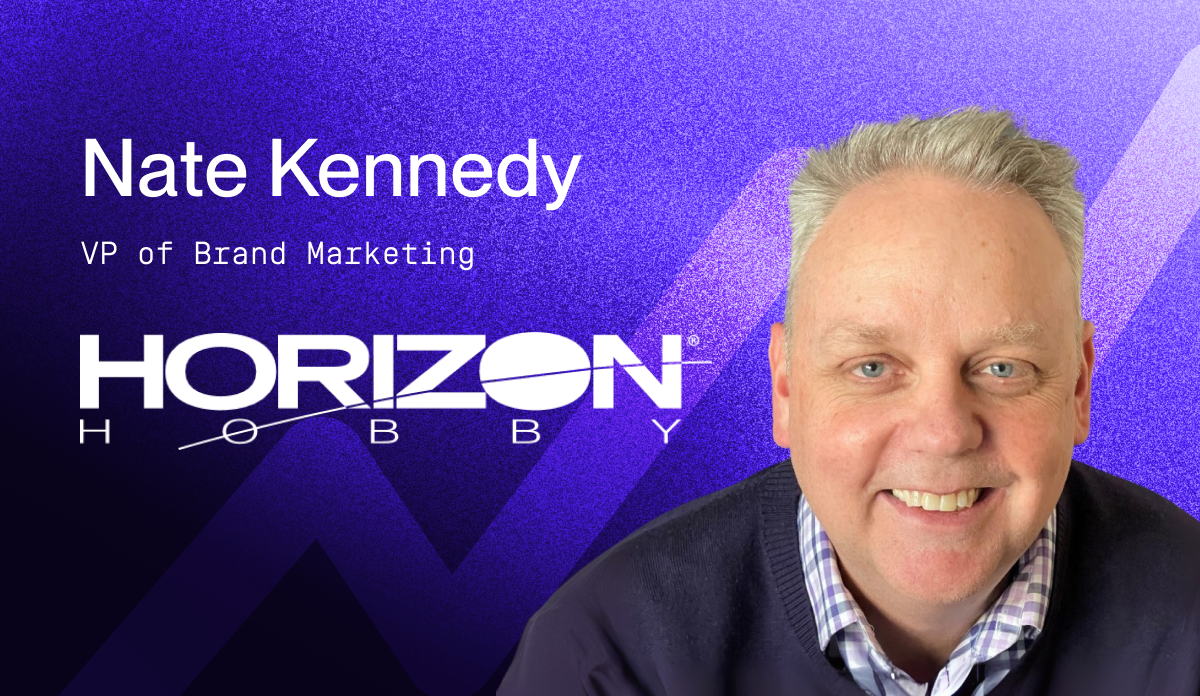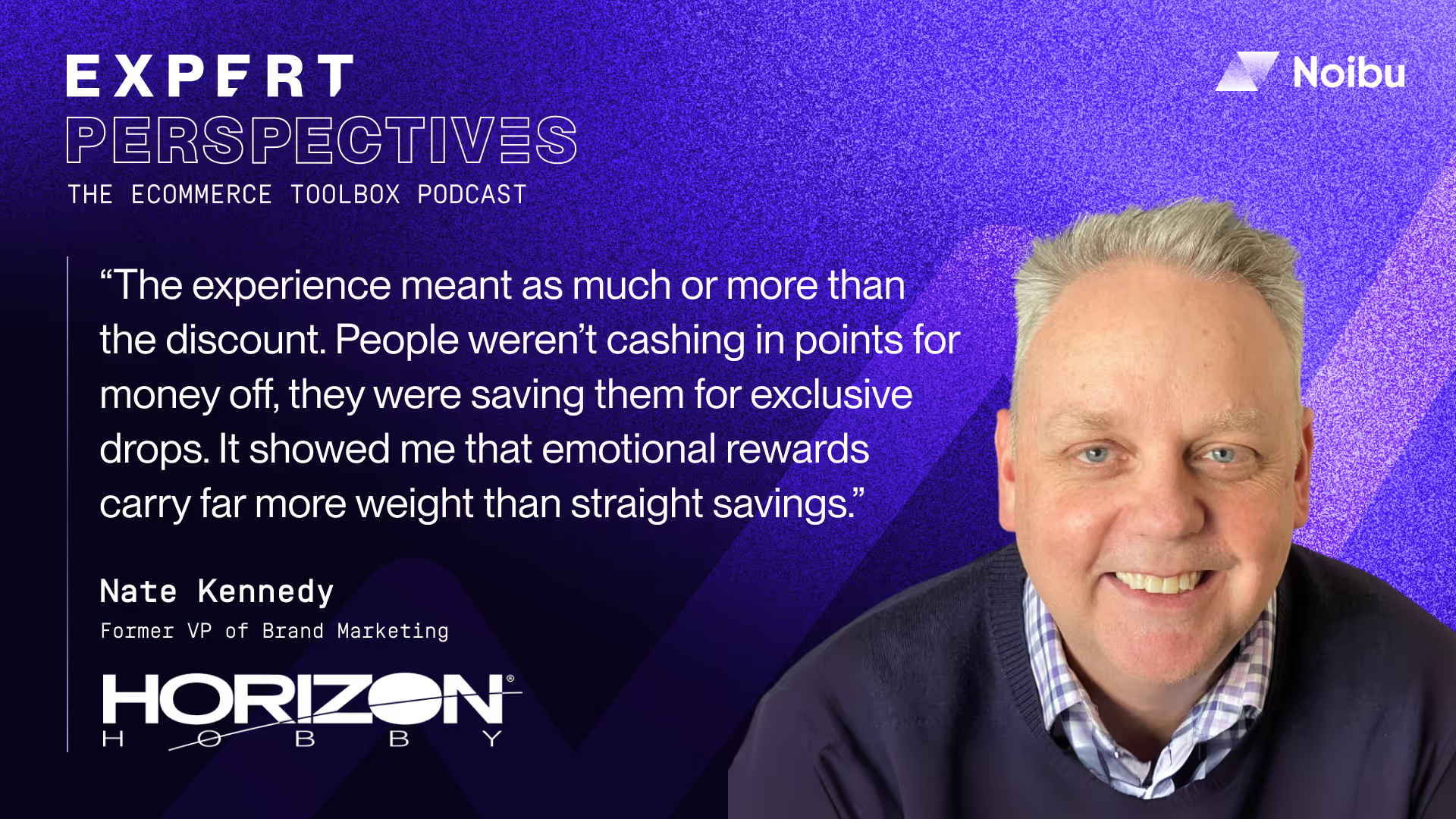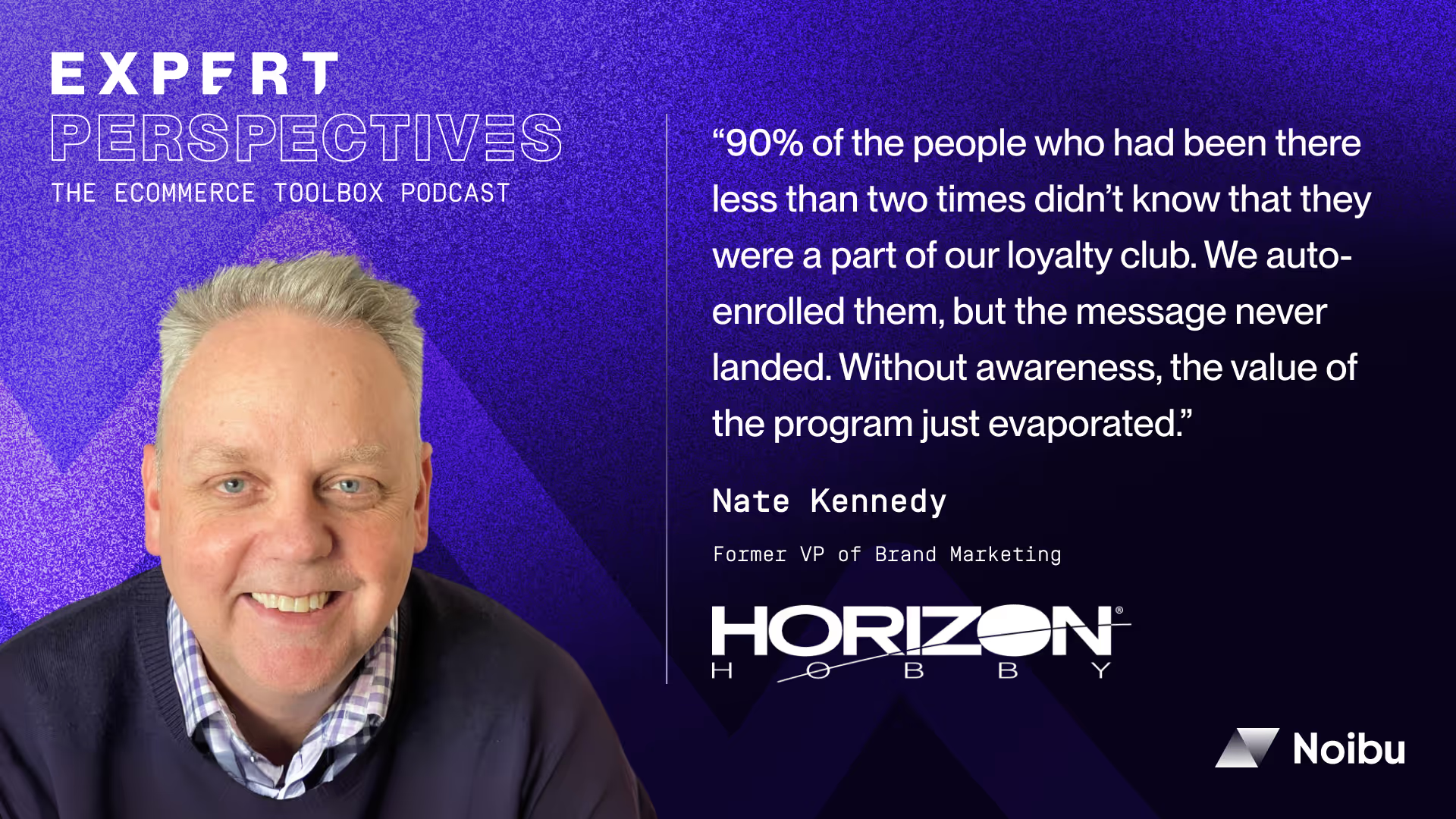Designing loyalty that lasts: Lessons from ecommerce leader Nate Kennedy

Get the full episode here
🎧 Listen to the full conversation on Apple, Spotify, or YouTube
“Loyalty isn’t about points—it’s about making your customers feel like insiders.”
— Nate Kennedy, former VP of Global Brand Marketing at Horizon Hobby
In this episode of Ecommerce Toolbox: Expert Perspectives, host Kailin Noivo sits down with ecommerce veteran Nate Kennedy to break down what makes loyalty programs actually work—and what makes them fall flat.
Nate shares lessons from leading Select Blinds for 16 years and later Horizon Hobby’s digital growth and loyalty program strategy. The key takeaway? Discounting alone isn’t enough. Emotional connection, personalization, and smart tiering are what really drive retention.
Tiered loyalty works—until it doesn’t
When Nate launched Horizon Hobby’s loyalty program, the tiered model made sense:
- Paid VIP tier with exclusive perks
- Free middle and lower tiers with varying levels of value
The top tier was a hit—1,500+ subscribers getting elite access, service, and swag. But the program struggled elsewhere.
“We over-rewarded the top and undervalued the bottom. That created resentment.”
— Nate Kennedy, former VP of Global Brand Marketing at Horizon Hobby
Customers in the lower tier felt left out—especially when top-tier users got express service for technical issues. Given that Horizon’s products often require post-purchase support, the inequality was felt hard.
Emotional perks > discounts
Nate quickly realized something surprising: discounts weren’t the reason people stayed.
“We had customers saving their loyalty points—not for discounts, but for exclusive experiences.”

Instead of stacking on more coupons, Nate’s team explored perks like:
- Member-only product drops
- Beta access to new gear
- Limited-run swag packs
- Behind-the-scenes content
These perks created emotional value—especially among Gen Z and millennial customers, who expect brands to feel personal.
Accidentally building a class system
One unintended consequence? The loyalty tiers exposed a divide in the customer base.
- Air product buyers (planes, drones) were more affluent—and flocked to the paid tier.
- Surface product buyers (cars, boats) skewed blue collar—and often felt left out.
“We didn’t mean to create a hierarchy—but we did. It alienated a core segment of our brand.”
— Nate Kennedy, former VP of Global Brand Marketing at Horizon Hobby
That mistake prompted Horizon to revamp the program post-launch, making the lower tiers feel more included and valued.
Personalization is everything
Generic email blasts don’t work anymore—and Nate knew that firsthand.
Instead, his loyalty approach included:
- Knowing what customers had purchased
- Anticipating their next likely need
- Tailoring loyalty offers to their product category or behavior
“It’s not about shouting louder. It’s about making customers feel seen.”
Leading indicators matter more than lagging ones
Before you see results in LTV or revenue, you need early engagement signals. Nate focused on:
- Instagram and YouTube interactions
- Reviews and user-generated content
- Repeat logins or account visits
- Redemption behavior within the loyalty portal
At Select Blinds, they used free sample swatch requests as a proxy for future conversion. At Horizon, they looked for similar lightweight signals tied to product interest and re-engagement.
Customers didn’t know they were in the club
Initially, Horizon made loyalty opt-out instead of opt-in—so nearly everyone joined. But most didn’t realize it.
“90% of people with one or two purchases didn’t even know they were part of our loyalty program.”
— Nate Kennedy, former VP of Global Brand Marketing at Horizon Hobby
That forced a reset: improving messaging, re-onboarding customers post-purchase, and making benefits clearer across touchpoints.
Nate compared it to T-Mobile’s benefits program:
Great perks, but if you’re not reminded often, you forget they’re even there.

The digital wallet dilemma
Looking ahead to 2026, Nate predicts a growing tension between frictionless checkout and brand connection.
“Apple Pay, Affirm, Sezzle—customers want speed. But you still need them to understand your value.”
That creates a challenge:
- How do you reinforce loyalty during lightning-fast checkout?
- Where do you surface brand benefits without interrupting the flow?
It’s a problem many ecommerce brands haven’t solved—but will need to.
Key takeaways for ecommerce leaders
- Balance your tiers. Don’t alienate your mid and lower-tier customers.
- Discounts fade. Emotional and experiential perks create deeper loyalty.
- Personalize aggressively. Show customers you know them.
- Track early signals. Don’t wait for LTV—watch engagement closely.
- Communicate benefits. Make sure customers know what they’re getting.
- Prepare for wallet-first checkout. Loyalty must coexist with instant payments.
Listen to the full episode with Nate Kennedy now:


.avif)
.avif)
.avif)